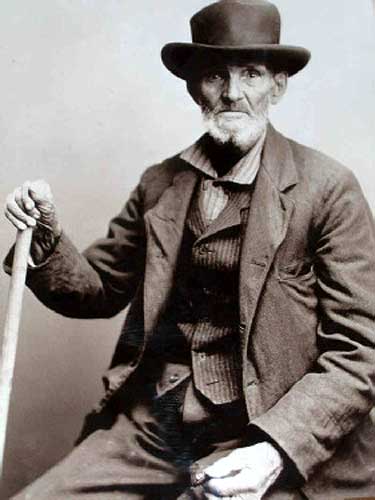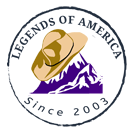
John David Albert, mountain man and frontiersman
John David Albert was a mountain man who made his way west from Pennsylvania and was friends with other important frontiersmen of the time, including Jim Baker and Charles Autobees.
Albert was born in Hagerstown, Maryland, on May 24, 1810, to George and Catherine Albert and was baptized in St. John’s Evangelical Lutheran Church. Two years later, when the War of 1812 began, his father joined the military and was killed on January 8, 1815, at the Battle of New Orleans. Unfortunately, his mother died a short time later, and young John was orphaned. He was then sent to live with a sister in Harrisburg, Pennsylvania.
As a young man, John went to work on a keelboat along the Ohio and Mississippi Rivers and, in 1833, was part of a crew that made its way from New Orleans, Louisiana, to St. Louis, Missouri. He then spent the winter of 1833-34 in St. Louis, where he likely heard several tales from the many mountain men and trappers who frequented the city.

Trading with the American Fur Company
In the spring of 1834, he joined a group of about 60 fur trappers and traders headed to the upper Missouri River basin. He would work in the Rocky Mountain West as a trapper for the next three years. At some point, he became part of the Western Department of the American Fur Company at Fort Laramie, Wyoming. He was known to have traded furs for supplies at Nathaniel J. Wyeth’s Fort Hall in Idaho.
In the winter of 1836-37, he and several other trappers worked and spent time at an Indian encampment near the confluence of the Cache la Poudre River and the South Platte River. That winter, the snow was very heavy, reaching depths of seven feet, trapping the men for most of the winter.
“Our horses froze to death, and the meat kept all winter.” — John David Albert
In the spring, Albert and the other trappers traveled on foot for about 200 miles to Bent’s Fort on the Arkansas River in Colorado, where they obtained horses.
At about that same time, Peter Sarpy and Henry Fraeb formed a partnership with the backing of Pratte, Chouteau & Co. to trade on the South Platte River. These two men soon erected an adobe trading post known as Fort Jackson, and Albert went to work for them. He remained with them until October 1838, when the post was sold to Bent & St. Vrain Co. as part of a non-compete agreement.
Albert then made his way to the Taos Valley of present-day New Mexico, where he married Julia, a Mexican-American woman, the daughter of William Pope, another mountain man. He then settled down and took up farming.

Arroyo Hondo, New Mexico by Morris Blackburn, 1959.
In 1847, Albert was employed at Simeon Turley’s Mill, about 12 miles from Taos at Arroyo Hondo. In January, he was one of eight to ten mountain men who defended the mill in a siege by approximately 500 Mexicans and Indians during the Taos Revolt. The frontiersmen held off the attack into the night when Albert and Thomas Tate Tobin escaped separately on foot in the confusion to go for help. Albert walked 140 miles to the trading post at Pueblo, Colorado, through winter conditions with no coat, having escaped only with his weapons and shooting bag, and Tobin walked to Santa Fe. Albert and Tobin were the only two men to escape Turley’s Mill alive.
“They commenced the attack on Arroyo Hondo by sending into us a flag of truce, demanding our arms and ammunition and unconditional surrender of ourselves. I told the boys they could do as they pleased, but I knew their treachery would lead us to certain death in the end, and I was going to die with my gun in my hands and not be murdered like a common dog.”
— John David Albert
Albert later settled at Walsenburg, Colorado, in about 1872. He carried mail out of the Spanish Peaks post office at Cuchara station, trapped on the Purgatory and Cuchara Rivers, and is credited with building the fort at La Plaza de la Leones.
Albert survived three wives, all of whom were partially or fully Hispanic, and all of whom died while married to him. He fathered 21 children before he died in Montana on April 24, 1899, and is buried in the old Catholic Cemetery at Walsenburg, Colorado.
©Kathy Alexander/Legends of America, updated November 2024.
Also See:
Sources:
Hafen, Leroy R.; The Mountain Men and the Fur Trade of the Far West, Vol. II; Arthur H Clark Company, 1965.
Mountain Men of the Rocky West
Thrapp, Dan L.; The Encyclopedia of Frontier Biography; University of Nebraska Press, 1991.
Wikipedia


